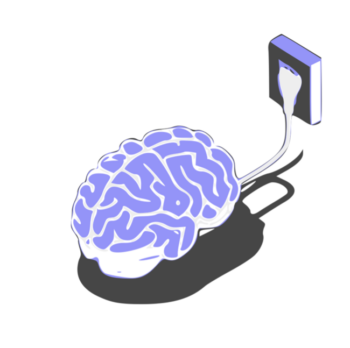Introducing the 4 Pillars to manage migraine by mastering metabolism.
How I discovered the missing link between Metabolism and Migraine
I am Dr. Elena Gross, a neuroscientist, PhD in clinical research, and most importantly a former chronic migraineur. The lack of tolerable and efficacious treatment options led me to pursue a MSc in Neuroscience at the University of Oxford.
During this time and throughout my PhD in Clinical Research at the University of Basel, I discovered ketone bodies & their potential use in brain health, which changed my life completely.
I am the inventor of three patents, creator of MigraKet, and I discovered the metabolic migraine subgroup, which I am now using to create a Mastering Migraine Metabolically community.
I strongly believe that my two decades of suffering were not in vain. I see it as my mission to build a community of self-empowered, strong-minded migraine sufferers, who regain control of their life and destiny, while working to remove the stigma around migraine.
I was able to get my brain and my life back, and so can you! In the following article, I would like to provide you with the knowledge and the support you need to better manage your (sensitive) brain health. I want to empower you to reclaim your life with science- backed tools and self-care rituals for your brain all centered around energy metabolism.
Migraine – the second biggest disabler according to WHO
 According to the World Health Organization, migraine is the third most common disease overall and the most common neurological disease worldwide. A migraine attack is not simply a “bad headache”. On the contrary, apart from severe pain, a migraine often includes intense sensitivity to light, sound, and/or smell, as well as nausea and vomiting. About one-third of sufferers experience the aura phenomenon in the premonitory (before pain) phase, which can take the form of temporary sensory disturbances ranging from blindness in parts of the visual field to partial paralysis of the body (hemiplegic paralysis)
According to the World Health Organization, migraine is the third most common disease overall and the most common neurological disease worldwide. A migraine attack is not simply a “bad headache”. On the contrary, apart from severe pain, a migraine often includes intense sensitivity to light, sound, and/or smell, as well as nausea and vomiting. About one-third of sufferers experience the aura phenomenon in the premonitory (before pain) phase, which can take the form of temporary sensory disturbances ranging from blindness in parts of the visual field to partial paralysis of the body (hemiplegic paralysis)
Migraine goes far beyond physical symptoms, too. As anyone who suffers from it will know all too well, it also means loss: loss of control, of the ability to plan, of quality of life, independence and, perhaps, of a job, hobbies or even friends and family who might distance themselves from you due to a lack of understanding or an inability to cope. Sadly, the presence of pain can lead to the absence of life, or at least what most of us would see as ‘normal’ life.
The development of migraine is governed by multiple factors and most likely a huge number of different genes. In practice, what this means is that a genetically predisposed individual must also be exposed to an environment that triggers those genes to be expressed. Anything that is not your genetic code (DNA) is considered part of your environment: the food you eat, the surroundings you grow up in, the people you spend time with or even birth itself. This interaction of genes and environment is called epigenetics.
There is still much controversy about the potential causes of migraine. Because of this, current therapies are limited, relatively ineffective, and/or accompanied by unwanted side effects. Temporary relief can be achieved with acute medications that treat the symptoms of individual attacks but do not address the root cause. Furthermore, they are not recommended to be taken frequently due to the risk of addiction, medication-overuse headaches, and other side effects.
What is Energy metabolism and why is it important for our brain health
Living organisms, such as us humans, are unique in that they can extract energy from their environment and convert it into a form that they can use.
 In simple terms, metabolism is the process by which your body converts what you eat and drink into energy. During these complex chemical reactions, the energy-generating nutrients found in food and beverages are combined with oxygen to create the energy currency ATP that your body requires to function.
In simple terms, metabolism is the process by which your body converts what you eat and drink into energy. During these complex chemical reactions, the energy-generating nutrients found in food and beverages are combined with oxygen to create the energy currency ATP that your body requires to function.
Mitochondria are the powerhouses that supply all organs and cells with ATP. Thousands of coordinated, multi-step metabolic reactions happen at all times and in parallel — all regulated by the body — to keep our cells and hence our organs (such as the brain) healthy and working.
All the chemical reactions that take place inside of a cell are collectively called the cell’s metabolism.
Energy metabolism and the brain
Our bodies need ATP (adenosine triphosphate, which is the body’s energy currency) to do everything from thinking to moving or growing. Even when you are at rest, your body needs energy for all its “hidden” functions, such as circulating blood, breathing, adjusting hormone levels, and growing new and repairing old cells.
The most energy-hungry organ is our brain. Yet it cannot store energy very well and is therefore highly dependent on energy sources from the rest of the body. Like a laptop without a battery, it quickly dies once it’s ‘unplugged’. Another challenge for the brain’s high energy needs comes in the form of the protective blood-brain barrier, which excludes the passage of large, energy-dense molecules, such as long-chain fatty acids.
In fact, only three molecules can feed the brain in sufficient quantities:
- Glucose
- Lactate
- Ketone bodies
Could a migraine attack be a warning signal?
Since the brain orchestrates most behavior, it’s essential that it has a constant energy supply. Any shortfall in the ATP levels required to sustain the body’s reactions and organs properly, will have severe consequences.
But your brain does not tell you that it needs more food, or to stop expending energy. What it can do is send signals that can force us to change our behavior, to prevent harm. A migraine attack is probably the most potent of these signals.
There is increasing evidence to suggest that migraine is strongly related to reduced brain glucose metabolism, mitochondrial dysfunction and oxidative stress. In essence, it is likely that migraine attacks can be triggered by the brain not receiving an adequate supply of energy and/or mitochondria not functioning as they should, rendering the brain vulnerable to an energy deficit. This can create stress for the brain, ultimately promoting symptoms of migraine.
Neuroimaging studies, which can directly quantify brain ATP, show a decrease of 16% between attacks in patients with migraine without aura, compared to healthy controls. This is one of the pillars of evidence supporting my hypothesis. That mismatch between energy availability and energy utilization is a cornerstone of migraine pathophysiology.
In short, the brain gets hungry but there’s not enough food in the cupboard!
What could cause such an energy deficit?
Mitochondria are often called the “powerhouse of the cell” because this is where the bulk of our energy (ATP) is produced. Thus, when mitochondria are functioning suboptimally, our cells are generating suboptimal amounts of energy.
A lack of micronutrients, oxygen or any other substance required for mitochondrial functioning–as well as increased oxidative stress–are all factors that can impair the capacity of mitochondria to produce energy for us. A further factor that makes mitochondria vulnerable is their location outside of the cell nucleus, in the cytoplasm. This makes them more open to attack from oxidative stress or toxins. In addition, mitochondria contain their own DNA, called mitochondrial DNA, which, in contrast to DNA in the cell nucleus, has few repair mechanisms.
Combined, after years of living in today’s toxic environment, these vulnerabilities can contribute to acquired problems with mitochondrial functioning.
Migraine trigger factors and energy metabolism and/or oxidative stress
Various factors have been identified as common migraine triggers, and in most cases they can be linked to reduced brain energy metabolism and oxidative stress.
- Stress: Physical or psychological stress increases free radicals, which in turn impair energy production.
- Fasting or skipping meals: Lead to hypoglycemia or energy deficiency in the brain.
- Changes in sleep: Lead to disbalances in hormone and energy production.
- Female hormonal changes: Since estrogen is protective against oxidative stress, falling levels prior to menstruation may increase the risk of migraine.
- Changes in weather (temperature, high and low pressure): Less oxygen in the air limits the production of energy since mitochondrial functioning is impaired and oxidative stress is increased. On the other hand, extreme hot or cold conditions stress the entire body, which means extra energy is needed to maintain a constant body temperature.
- Exercise: Especially of long duration or higher intensity, as it increases oxidative stress.
- Alcohol: Since it increases oxidative stress and indirectly limits gluconeogenesis, i.e. glucose production, and general energy production in the liver.
- Strong scents: The often-toxic chemicals included in strong scents (e.g. perfumes and cigarette smoke) increase oxidative stress and impair mitochondrial functioning.
- Intense light: Bright and blue light increase oxidative stress in the retina and other tissues.
- Loud noises: Can also increase oxidative stress.
- High sugar or carbohydrate consumption: It increases oxidative stress and causes a subsequent glucose drop.
Dr. Elena Gross’ Managing Migraine Metabolically Model
By now it has probably become apparent how complex the processes involved in energy deficits and migraine are. Hence, suggesting that migraine could be mastered via one quick fix is not very realistic.
Since I believe in the necessity of a holistic and multifaceted approach for managing migraine, I have developed a model that includes the most important pillars for supporting our sensitive and hungry migraine brains in the best possible ways.
There are the four categories we will be focusing on for managing migraine metabolically:

The Mastering Migraine Model© follows my general overarching principle of trying to assure that the brain is always adequately fueled. By addressing all 4 pillars we aim to accommodate the energy demands of our hungry migraine brains at all times, so that the migraine warning signal does not have to force us to rest and save energy.
1. Stabilizing blood glucose
 Already in 1935 migraine was being referred to as a ”hypoglycemic headache“ – in other words, caused by low glucose levels.
Already in 1935 migraine was being referred to as a ”hypoglycemic headache“ – in other words, caused by low glucose levels.
A common problem for migraine patients is hyperinsulinemia or reactive hypoglycemia, which basically means that your body’s glucose thermostat is broken. In response to carbohydrate or glucose ingestion, it responds too late and then sends too much insulin, which in turn will remove more glucose from your blood than you ingested, leading to reactive hypoglycemia – low blood sugar.
Stable blood sugar has many potential positive effects other than better energy supply, such as reduced shakiness, brain fog, and cravings, a reduction in the release of stress hormones such as cortisol and adrenaline, and a positive effect on your electrolyte balance–all relevant factors for the management of migraine.
2. Increasing antioxidants and decreasing oxidative stress
 Oxidative stress refers to the build-up of a particular family of reactive molecules in the body called reactive oxygen species (ROS). You can think of ROS like the proverbial bull in a China shop: unstable, dangerous and wreaking havoc. They bump around causing all sorts of damage to the proteins (enzymes), lipids (membranes) and nucleic acids (DNA) that make up every part of each cell.
Oxidative stress refers to the build-up of a particular family of reactive molecules in the body called reactive oxygen species (ROS). You can think of ROS like the proverbial bull in a China shop: unstable, dangerous and wreaking havoc. They bump around causing all sorts of damage to the proteins (enzymes), lipids (membranes) and nucleic acids (DNA) that make up every part of each cell.
Antioxidants help us to fight oxidative stress. ‘Antioxidant capacity’ refers to your personal ability to get rid of or neutralize reactive oxygen species. It depends to a large extent on your genetic background and your ability to make potent enzymes that can scavenge the ‘baddies’.
The good news is that even if you are born with a suboptimal antioxidant function, by changing your lifestyle for the better you can at least help your body to make more antioxidant molecules. So, we have two levers that we can work with. On the one hand we want to incorporate methods that strengthen our antioxidant capacity. On the other hand, we want to employ strategies that reduce the oxidative stress levels themselves. One rather intuitive sounding but very important concept for reducing oxidative stress is pacing, which simply means not using energy up faster than your mitochondria can supply it. Reducing other stressors, high intensity exercise, switching to whole and nutritious foods, watching out for toxins in food, water and air, etc., are other good strategies to combat these free radicals.
3. Optimizing Micronutrients
 In order to produce sufficient amounts of energy (ATP) our mitochondria require all sorts of things to function properly. Much like a car engine needs air and oil as well as petrol, mitochondria also need more than just fuel. Our mitochondria engines will be able to run at maximum capacity, and with as little wear and tear as possible, only if the necessary micronutrients and co-enzymes they need to function are available.
In order to produce sufficient amounts of energy (ATP) our mitochondria require all sorts of things to function properly. Much like a car engine needs air and oil as well as petrol, mitochondria also need more than just fuel. Our mitochondria engines will be able to run at maximum capacity, and with as little wear and tear as possible, only if the necessary micronutrients and co-enzymes they need to function are available.
Adequate nutrient levels, such as trace minerals (Mn, Zn, Se, Fe, Mb, Cr), water-soluble vitamins (C, B1m B2, B3, B5, B6, B12, folic acid, biotin), fat- soluble vitamins (E, D, K, A) and others (co-enzyme Q10, L-carnitine, amino acids, glutathione, omega-3 fatty acids, alpha-lipoic acid etc.) are essential for mitochondrial function as they play important roles in energy metabolism. The body can synthesize some of these nutrients itself, but many of them are essential, which means they must be ingested via our diets. Therefore, a high-quality, wholefoods diet is so important for good mitochondrial functioning, though it might not always be enough. Migraine sufferers in particular can often be deficient in micronutrients because they use up more micronutrients than a healthy person and might need more of certain substances than even the best diet can give them. High-quality products that use bioidentical ingredients can be a real game changer in managing migraine.
4. Adding an alternative fuel source
Research suggests that a lack of energy in the brain can render it hyperexcitable, which can contribute to migraine attacks. Interestingly, the opposite also seems to be the case: a genetically determined hyperexcitable brain is also much more energy demanding. This makes intuitive sense: the more neurons fire, the more ATP is needed, a bit like a faster car needs more petrol. It has been known for a while that a migraine brain fails to habituate (a phenomenon that saves energy) and that this phenomenon is more profound in more severely affected patients.
Habituation can be seen as an energy-conserving mechanism; when a stimulus doesn’t change, the healthy brain switches off because it encodes for change, not constancy. For example, if a non-migraineur looks at a checkerboard that is not changing, their brain will soon stop or drastically reduce firing. In contrast, the brain of a migraineur looking at the same stimulus will not stop firing and hence ‘spends’ much more ATP than a healthy person.
It seems that a migraine brain is simply much more energy demanding. The question, then, is how can we make sure that these more energy-demanding brains get the extra amounts of fuel they so urgently need? As I stated already, there are in fact only three molecules that can feed the brain: glucose, lactate and ketone bodies. On a carbohydrate-rich diet, the brain’s primary source of energy is glucose. However, we know that the brain can derive up to 70% of its energy from ketone bodies. They are small fatty acid-derived metabolites produced by the liver during fasting and can serve as an alternative fuel when glucose availability is limited. These would be referred to as endogenous ketone bodies, meaning they are produced by your body. The other way to ramp up your ketone levels is by providing your body with bio-identical exogenous ketone bodies taken in the form of high-quality products
Meeting your body’s energy requirements partially with ketone bodies rather than glucose has several advantages. Ketosis is very beneficial if your glucose metabolism is impaired. Recent research has shown that ketone bodies have several benefits, such as being potent antioxidants, a potent energy source for the brain, and more. In addition, ketone bodies provide more ‘energy-rich ATP’ with lower oxygen demand and lower free-radical generation.
Conclusion
In summary, my journey from a chronic migraine sufferer to a neuroscientist has helped me uncover the crucial connection between metabolism and migraine. Through my research and personal experiences, I have learned how energy deficits in the brain, mitochondrial dysfunction, and oxidative stress play a significant role in what I now call “metabolic migraine”.
My Managing Migraine Metabolically model is designed to empower you to regain control of your life by focusing on stabilizing blood glucose, reducing oxidative stress, optimizing micronutrient intake, and providing your brain with alternative fuel sources.
With this holistic approach, I believe you can take proactive steps towards better brain health and a higher quality of life.
Disclaimer: The content of this blog post is for general informational purposes only and does not constitute the practice of medicine, nursing or other professional health care services, including the giving of medical advice. Dr Elena Gross is a neuroscientist and PhD in clinical research – no doctor-patient relationship is formed. The use of this information and the materials linked is at the user’s own risk.
This blog is provided for informational purposes only and should not be considered a replacement for professional medical advice, diagnosis, or treatment. If you have any questions about a health condition or concerns related to your well-being, always consult with your physician or another qualified healthcare professional.

 Elena Gross, PhD
Elena Gross, PhD

